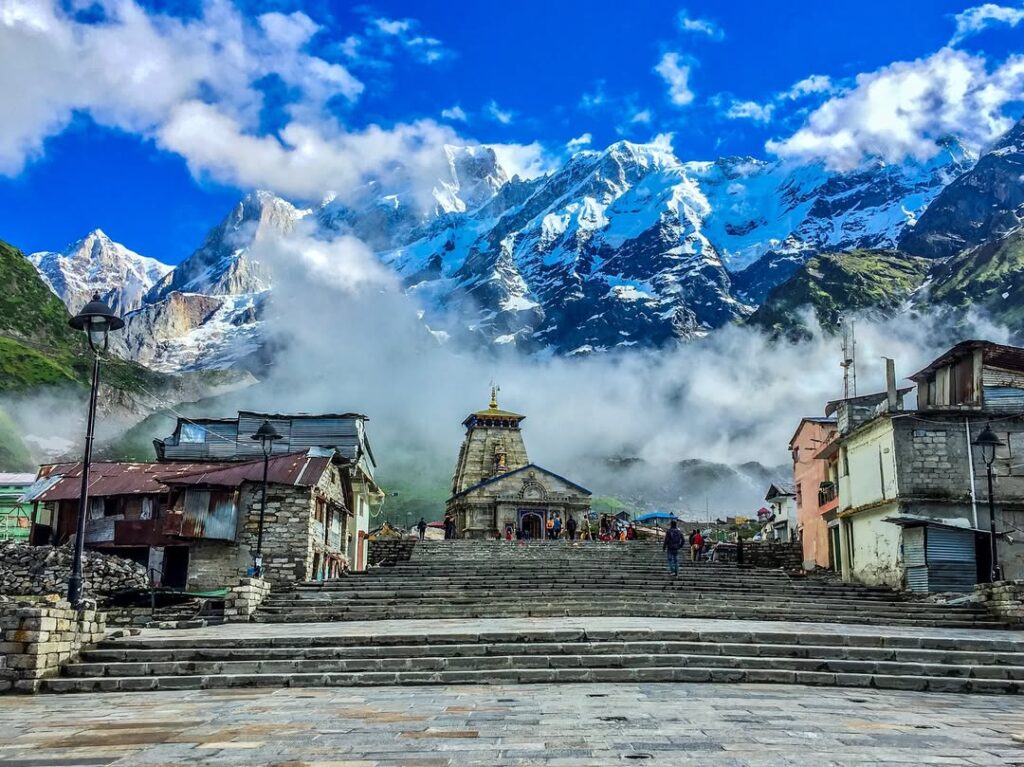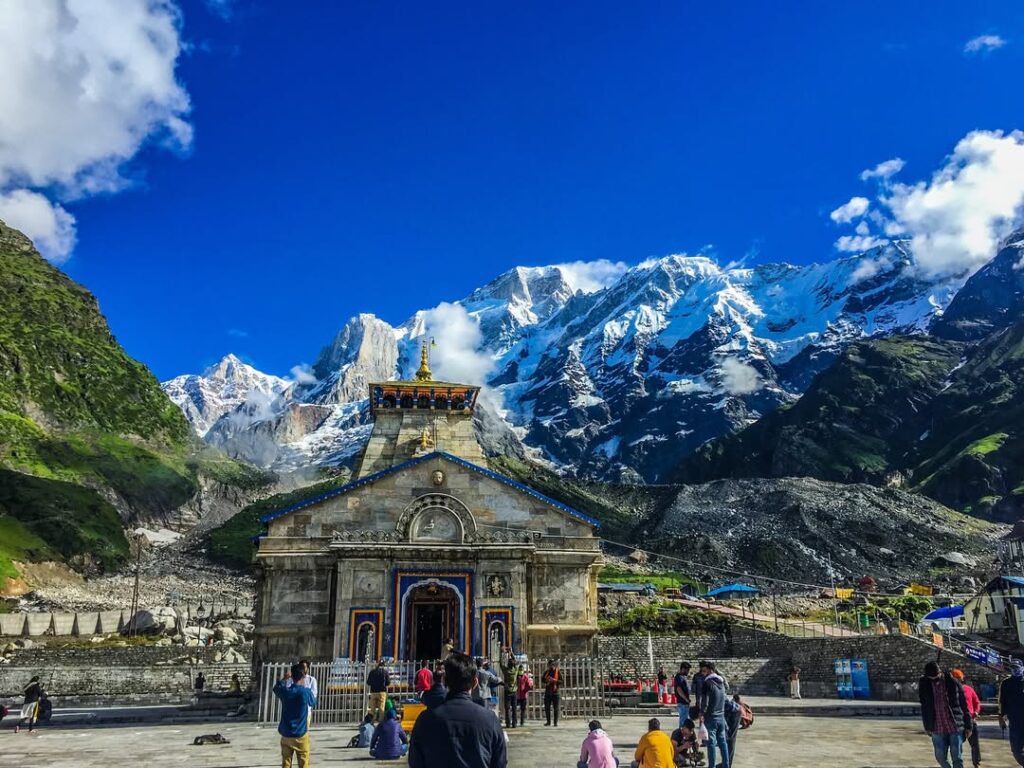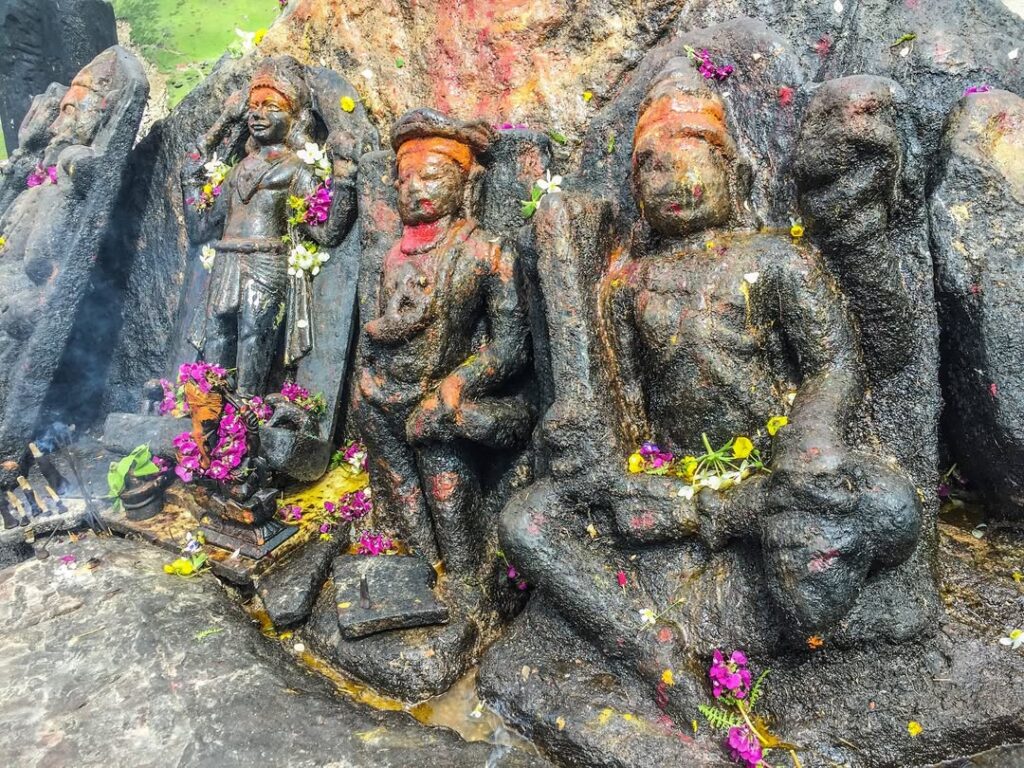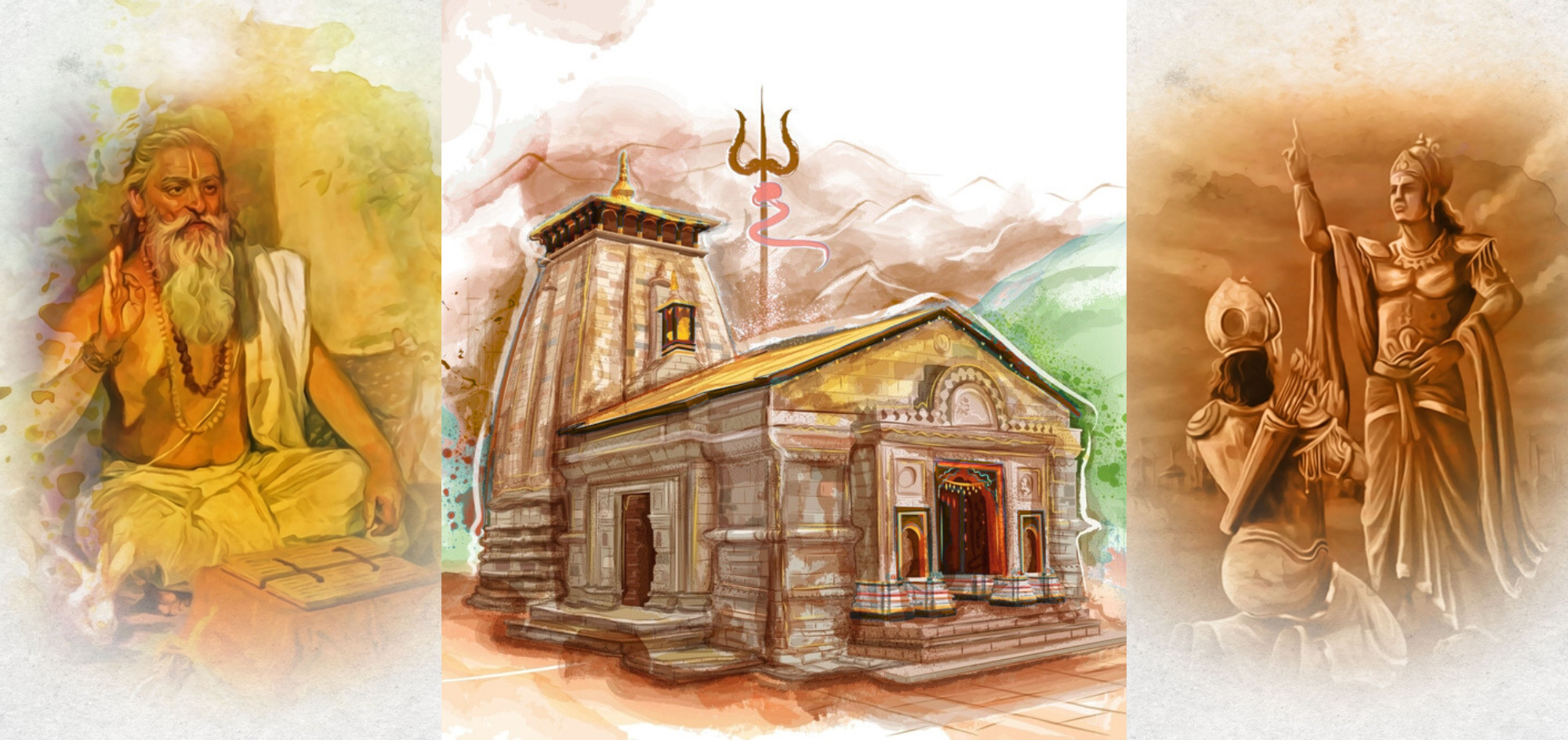Kedarnath History & Mythology
Published on October 22, 2025
Kedarnath is one of the most sacred places for devotees of Lord Shiva, located in the majestic Himalayan range of Uttarakhand. It is part of the Char Dham Yatra and holds immense religious and historical value. The temple, dedicated to Lord Shiva, is believed to have been built by the Pandavas after the Mahabharata war to seek forgiveness for their sins. Later, Adi Shankaracharya restored the temple, making it an important pilgrimage site.
Today, many travelers and devotees choose a Kedarnath Tour Package from Delhi to experience both the spiritual and historical sides of this ancient temple. The Kedarnath Yatra Package includes a complete journey that covers not only the temple visit but also nearby sacred spots like Guptkashi and Rudraprayag. This trip allows devotees to connect deeply with the divine legends that make Kedarnath unique.
For those starting their Delhi to Kedarnath tour, the route itself offers a glimpse into the culture, devotion, and scenic beauty of Uttarakhand. Each step towards Kedarnath is filled with faith and mythological stories that have been passed down for generations, making it a destination of both history and devotion.

The Origin of Kedarnath Temple and the Legends of Lord Shiva
The story of Kedarnath Temple is filled with faith, history, and divine mysteries that make it one of India’s most sacred pilgrimage destinations. The temple, dedicated to Lord Shiva, is believed to date back thousands of years and stands as a major center of devotion for followers of Hinduism. It is said that the temple marks the place where Lord Shiva appeared in the form of a bull to bless the Pandavas after the Mahabharata war.
According to legend, when the Pandavas sought forgiveness for the bloodshed during the war, Lord Shiva tried to hide from them and took the form of a bull. When they found him, he dived into the ground, leaving his hump visible in Kedarnath. The remaining parts of his body appeared at other places across the Himalayas, forming the Panch Kedar temples — Kedarnath, Tungnath, Rudranath, Madhyamaheshwar, and Kalpeshwar.
Key Highlights of Kedarnath’s Origin and Legends:
-
The temple is believed to have been built by the Pandavas and later restored by Adi Shankaracharya.
-
It is one of the 12 Jyotirlingas of Lord Shiva, symbolizing his infinite presence.
-
The temple stands at an altitude of 3,583 meters near the Mandakini River, representing both power and peace.
-
Every year, thousands of devotees embark on the Kedarnath pilgrimage tour to seek blessings and witness its ancient heritage.
-
The Kedarnath travel package often includes guided visits to these mythological sites, allowing pilgrims to experience the full spiritual journey.
The origin of Kedarnath is not just a story—it’s a living symbol of devotion, faith, and the eternal connection between humans and divinity, attracting believers from across India and the world.
Ancient Beliefs Behind the Sacred Kedarnath Pilgrimage Tour
The Kedarnath pilgrimage tour is not just a journey to a temple; it is a spiritual experience rooted in ancient Hindu beliefs and traditions. For centuries, devotees have walked long distances to reach this holy shrine, believing that Lord Shiva himself blesses every person who completes the yatra with true devotion. The temple’s history is linked to several mythological events that make it one of the most important pilgrimage sites in India.
According to ancient beliefs, visiting Kedarnath helps one attain moksha (liberation from the cycle of life and death). It is said that even a single visit with pure faith can wash away sins and bring peace to the soul. The high altitude and the powerful chants of “Har Har Mahadev” create a divine atmosphere that connects pilgrims deeply with Lord Shiva’s energy.
Spiritual Beliefs and Practices Followed During the Kedarnath Pilgrimage Tour:
-
Pilgrims take a holy dip in the Mandakini River before visiting the temple.
-
It is believed that Lord Shiva grants forgiveness and removes negative karma from true devotees.
-
Many devotees meditate or perform rituals at nearby spiritual sites like Bhairavnath Temple and Triyuginarayan Temple.
-
Chanting Shiva mantras and offering Bilva leaves inside the temple is considered highly auspicious.
-
The sacred lingam inside Kedarnath Temple is believed to be self-manifested, symbolizing Lord Shiva’s divine presence.
The Kedarnath Temple Tour Package offers travelers an opportunity to experience these spiritual traditions while learning about the deep beliefs that have guided devotees for generations. Whether you visit for faith, peace, or curiosity, the journey to Kedarnath reminds every pilgrim of life’s higher purpose and the timeless power of devotion.

Exploring the Mythological Connection of Pandavas to Kedarnath
The bond between the Pandavas and Kedarnath is one of the most sacred legends in Hindu mythology. After the fierce battle of Mahabharata, the Pandavas were filled with guilt for the destruction and loss of lives caused during the war. Seeking forgiveness, they began their journey to find Lord Shiva and ask for redemption. However, Lord Shiva wanted to test their devotion and disguised himself as a bull to hide from them.
When the Pandavas recognized him, Lord Shiva tried to disappear into the ground. It is believed that his hump appeared in Kedarnath, and other body parts surfaced at different places in the Himalayas — forming the famous Panch Kedar temples. The Pandavas then built shrines at each site to worship Lord Shiva and purify their souls.
Key Mythological Facts about the Pandavas and Kedarnath:
-
Kedarnath represents the hump of Lord Shiva, while other parts appeared in Tungnath, Rudranath, Madhyamaheshwar, and Kalpeshwar.
-
The Pandavas performed penance and prayers at these locations to seek forgiveness.
-
The legend symbolizes devotion, sacrifice, and the victory of faith over sin.
-
It is said that visiting all five temples completes the spiritual journey of self-purification.
-
Every year, thousands of devotees follow this path through the Kedarnath Yatra 2025, reliving the Pandavas’ sacred journey.
The Kedarnath Yatra 2025 gives pilgrims a chance to reconnect with this powerful mythology and walk the same spiritual trail once traveled by the Pandavas. For many, this yatra is not just a religious act but an emotional experience that teaches humility, faith, and forgiveness—values that the Pandavas learned during their divine quest for peace.
Spiritual Significance of Kedarnath Temple in Hindu Mythology
Kedarnath Temple holds a unique place in Hindu devotion and mythology. Dedicated to Lord Shiva, it is considered one of the 12 Jyotirlingas and attracts thousands of pilgrims every year. Beyond being an architectural marvel, the temple represents faith, penance, and spiritual purification. Many devotees believe that a visit to Kedarnath can cleanse sins and guide them toward inner peace and moksha.
The temple’s location amid the Himalayan peaks adds to its spiritual energy. Pilgrims often feel a deep connection with nature, using the quiet surroundings for meditation and reflection. Legends say that Lord Shiva appeared here in the form of a bull to bless the Pandavas, making the site a symbol of divine presence and guidance.
Spiritual Highlights of Kedarnath Temple:
-
The self-manifested Shiva lingam is considered the core of spiritual energy in the temple.
-
Rituals like offering Bilva leaves and chanting Shiva mantras are believed to bring blessings and protection.
-
A holy dip in the Mandakini River before the temple is considered purifying and essential.
-
Joining a Kedarnath yatra package ensures a complete pilgrimage experience with guidance on rituals, prayers, and sacred sites nearby.
-
Festivals such as Mahashivratri and the temple’s opening and closing ceremonies attract devotees, emphasizing the temple’s cultural and spiritual importance.
-
The Kedarnath Dham Travel Guide provides essential information on routes, accommodations, and safety tips, helping travelers focus on devotion and spiritual growth.
A visit to Kedarnath is more than sightseeing; it is a journey of faith. Every step on this sacred path connects pilgrims to centuries of devotion, making the temple a living center of Hindu spirituality.

How the Divine Legends Shape the Kedarnath Yatra Package Experience
The divine legends of Kedarnath Temple play a major role in shaping the experiences of pilgrims. Stories of Lord Shiva appearing as a bull, the Pandavas seeking forgiveness, and the formation of the Panch Kedar temples add a rich layer of mythology to every visit. These legends not only create a sense of devotion but also guide the design of modern pilgrimage journeys, ensuring that travelers experience both spiritual and cultural significance.
For travelers booking a Delhi to Kedarnath tour, understanding these legends enhances the journey. Each stop, from the base camps to the temple itself, is planned to include insights into the myths, rituals, and historical background. Pilgrims feel a deeper connection when they witness the places associated with these ancient stories, making the tour both educational and spiritual.
How Legends Influence the Kedarnath Yatra Package:
-
The route often includes key sites like Gaurikund, Sonprayag, and the Mandakini River, each tied to divine stories.
-
Pilgrims are guided on traditional practices such as offering Bilva leaves, chanting mantras, and performing rituals inspired by the temple’s legends.
-
The Kedarnath travel package usually includes local guides who explain the historical and mythological significance at each stop.
-
Travelers experience the natural landscapes that feature in many legends, adding a sense of awe and spiritual reflection.
-
Special accommodations and arrangements are planned near sacred sites, allowing pilgrims to rest and meditate in a spiritually conducive environment.
-
Group discussions and briefings about the temple’s mythology help pilgrims understand the importance of faith and devotion in daily life.
The divine stories of Kedarnath not only enrich the religious aspect but also make the journey memorable. A Delhi to Kedarnath tour or a complete Kedarnath travel package ensures that travelers experience the legends firsthand, combining spiritual learning with a well-organized pilgrimage journey.
Understanding the Historic Routes – From Delhi to Kedarnath Tour
The journey from Delhi to Kedarnath is more than just a trip; it is a passage through history, culture, and devotion. Pilgrims traveling on a Delhi to Kedarnath tour experience a carefully mapped route that combines comfort, safety, and spiritual significance. The route itself follows paths that have been traveled by devotees for centuries, making every stop a link to the temple’s rich heritage.
The journey typically starts from Delhi, with travelers taking an overnight drive or a combination of flights and road travel to reach base towns like Haridwar, Rishikesh, or Dehradun. From there, the route moves through scenic valleys and mountain roads, including stops at Rudraprayag and Gaurikund, which hold religious importance in the legends of Kedarnath.
Key Highlights of the Historic Route:
-
Pilgrims follow ancient paths that have been used for centuries to reach Kedarnath, maintaining the traditional pilgrimage experience.
-
Major stops include Haridwar, Rishikesh, Rudraprayag, and Gaurikund, each offering spiritual, historical, and cultural insights.
-
Travelers on a Kedarnath travel package often receive guidance on performing rituals at significant stops along the way.
-
The journey includes trekking sections leading to the temple, allowing pilgrims to connect with the natural landscape described in the legends.
-
Overnight halts and planned accommodations are arranged to provide rest while keeping devotees close to key spiritual sites.
-
Scenic views of the Mandakini River and surrounding Himalayas enhance the spiritual ambiance of the journey.
By understanding these historic routes, pilgrims on a Delhi to Kedarnath tour can appreciate not only the temple’s sacredness but also the devotion and effort that countless generations of devotees have invested in this holy journey. The route itself becomes part of the spiritual experience, preparing pilgrims for the blessings of Kedarnath.

Kedarnath Trekking Package – Journey Through Myth and Mountains
The Kedarnath trekking package offers a unique blend of spirituality, adventure, and natural beauty. Unlike a regular tour, this trek allows devotees and travelers to experience the sacred journey to Kedarnath Temple while walking through the pristine landscapes of the Himalayas. The trek is deeply connected to mythology, with stories of Lord Shiva and the Pandavas adding spiritual depth to every step.
The trek usually begins from Gaurikund, the base village, and stretches about 16 km uphill to Kedarnath Temple. Along the way, pilgrims pass through dense forests, flowing streams, and small settlements that have served travelers for centuries. The trail provides breathtaking views of snow-capped peaks and the Mandakini River valley, making the journey as visually rewarding as it is spiritual.
Key Highlights of the Kedarnath Trekking Package:
-
Trek from Gaurikund to Kedarnath Temple, approximately 16 km, suitable for moderate fitness levels.
-
Learn about the legends of Lord Shiva and the Pandavas at key points along the trail.
-
Overnight halts in camps or guesthouses included in most Kedarnath travel packages.
-
Guided support for safety, rituals, and local knowledge throughout the trek.
-
Best time for the trek: May to October, when the weather is stable and paths are safe.
-
Essential services such as meals, first aid, and porter assistance are often part of the package.
-
Tips for pilgrims: carry light clothing, comfortable trekking shoes, water, and personal medication.
-
Opportunity to meditate and perform prayers in serene spots along the route.
The Kedarnath trekking package is more than a journey to a temple. It is a spiritual experience that combines devotion, history, and adventure. Each step on this trail strengthens faith, provides a closer connection to nature, and allows pilgrims to appreciate the legends that have made Kedarnath a sacred Himalayan landmark.
Conclusion – Preserving the Divine Heritage of Kedarnath
Kedarnath Temple is more than a religious site; it is a symbol of faith, devotion, and cultural heritage that has been preserved for centuries. Its history, mythology, and spiritual significance make it one of the most important pilgrimage destinations in India. Pilgrims from all over the country and abroad undertake the journey to seek blessings from Lord Shiva and connect with the timeless legends associated with the temple.
Planning a visit requires careful preparation, and understanding the Kedarnath trip cost, itinerary, and booking options is essential for a smooth pilgrimage. A well-structured Kedarnath tour itinerary ensures that travelers experience all key sites, rituals, and scenic locations while maintaining comfort and safety. Organized packages provide guidance on transport, accommodation, and trekking support, making the journey accessible to people of all ages and fitness levels.
Key Points to Preserve the Kedarnath Experience:
-
Compare different options for Kedarnath trip cost to choose a package that fits your budget without compromising on essentials.
-
Follow a planned Kedarnath tour itinerary to cover important religious and scenic stops, including Gaurikund, Mandakini River, and nearby temples.
-
Use trusted services for Kedarnath Tour Booking to ensure confirmed accommodations and transportation.
-
Respect the local culture, traditions, and natural surroundings to help preserve the sacred environment.
-
Participate in rituals and prayers with sincerity to truly experience the spiritual essence of the temple.
-
Prepare adequately for the trek or travel segments by carrying essentials, proper clothing, and first aid.
-
Encourage responsible tourism by minimizing waste and following guidelines provided by local authorities.
Preserving Kedarnath’s divine heritage is a shared responsibility. By planning thoughtfully through proper tour bookings, following a comprehensive tour itinerary, and considering the trip cost, pilgrims can enjoy a seamless, meaningful, and spiritual journey. This ensures that Kedarnath remains a sacred destination for generations to come, keeping its legends and devotion alive.
,aspect=fit&q=75)
Frequently asked questions
1. Who built the Kedarnath Temple?
The origins of Kedarnath Temple are steeped in legend. According to the Mahabharata, the Pandavas constructed the temple to atone for their sins after the Kurukshetra war. Some also believe Adi Shankaracharya revived or reconstructed it in the 8th century.
2. What is the significance of the Panch Kedar temples?
The Panch Kedar temples represent five sacred sites where different parts of Lord Shiva's body are believed to have appeared. These temples—Kedarnath, Tungnath, Rudranath, Madhyamaheshwar, and Kalpeshwar—were constructed by the Pandavas as part of their penance.
3. Why is Kedarnath considered a Jyotirlinga?
Kedarnath is one of the twelve Jyotirlingas of Lord Shiva, representing his infinite nature. The temple’s sanctum houses a unique triangular-shaped Shivalinga, believed to be the hump of Lord Shiva in bull form.
4. What role did Adi Shankaracharya play in Kedarnath's history?
Adi Shankaracharya is credited with reviving Kedarnath Temple in the 8th century. He established the tradition of worship and is believed to have attained Mahasamadhi near the temple.
5. How are the Pandavas connected to Kedarnath?
After the Kurukshetra war, the Pandavas sought Lord Shiva’s blessings to atone for their sins. Shiva eluded them by transforming into a bull and diving into the ground, leaving his hump at Kedarnath and other parts at the remaining Panch Kedar temples.
6. What is the Mahapanth or Swargarohini?
The Mahapanth, or Swargarohini, is the path the Pandavas are believed to have taken to ascend to heaven. Their journey culminated at Kedarnath, marking it as a sacred site for spiritual liberation.
7. What are the architectural features of the Kedarnath Temple?
Kedarnath Temple is constructed using massive stone slabs without mortar, showcasing advanced engineering skills. Its architecture reflects the traditional North Indian Himalayan temple style.
8. How does the Skanda Purana describe Kedarnath?
The Skanda Purana mentions Kedarnath as a sacred site where Lord Shiva released the holy Ganges from his matted hair, blessing the region with divine sanctity.
9. What is the significance of the Mandakini River near Kedarnath?
The Mandakini River flows near Kedarnath, believed to be the path through which the Ganges descended to earth. Its proximity adds to the spiritual ambiance of the temple.
10. How has Kedarnath's history influenced its present-day significance?
Kedarnath's history, intertwined with the Mahabharata and Puranic legends, continues to draw devotees seeking spiritual solace. Its resilience through natural calamities and association with the Pandavas and Adi Shankaracharya reinforce its importance as a Hindu pilgrimage site.



